Blue Wyandotte: Breed Profile
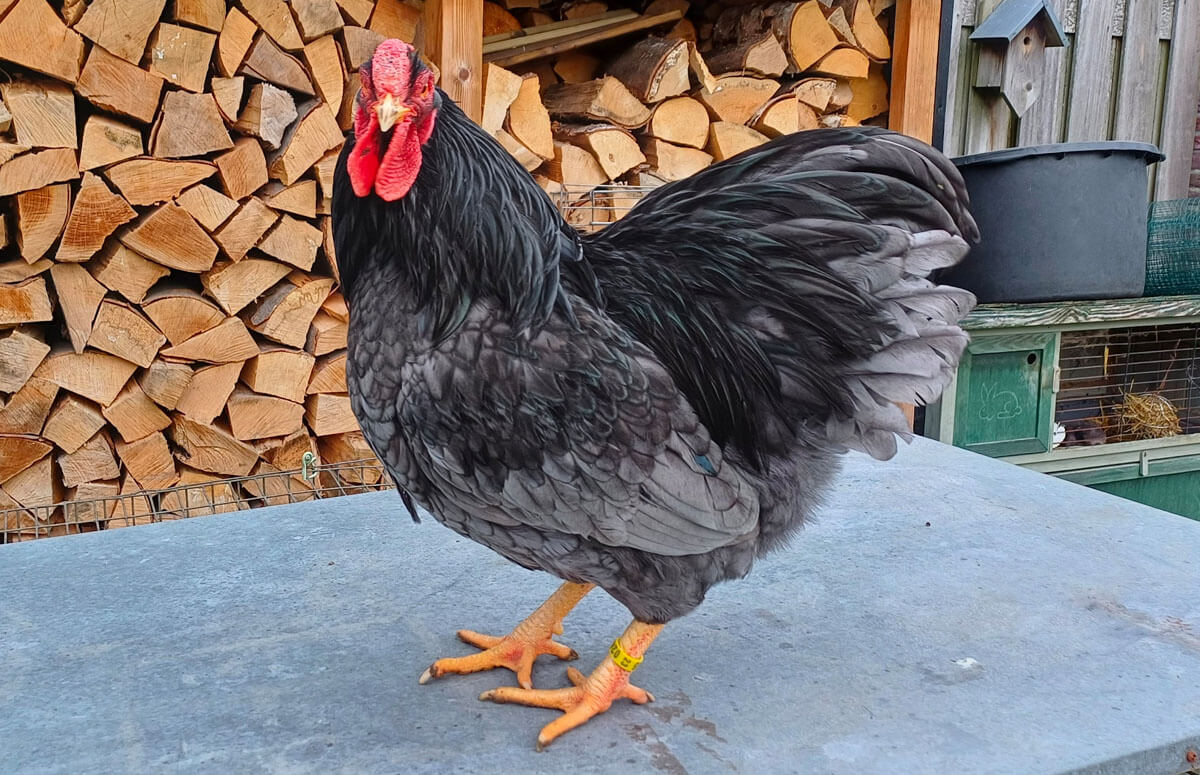
Characteristics | Eggs | Rooster vs Hen | Climate | Blue Color | History | Genetics | Personality
Blue Wyandottes are an official grey-blue color variety of the Wyandotte. It’s a modern color that only got admitted to the APA Standard in 1977. The blue color is also seen in non-official lines, like the Blue Partridge, Blue Penciled, and Blue Columbian Wyandottes.
Characteristics
The Blue Wyandotte has a shiny, uniform, soft, silvery-grey-blue plumage. Their feathers have a shady, solid color, lacking the strong lacing and patterns in other Wyandotte varieties. They do, however, show a bit of very fine lacing, as each feather may show a narrow, slightly darker feather edge.
| Eggs | 200 eggs/year |
| Egg Color | Brown |
| Egg Size | Large |
| Weight | 6.5 – 8 lbs |
| Hardiness | Cold |
| Temperament | Friendly but assertive |
| Beginner-friendly | Yes |
| Color | Blue-gray |
Blue Wyandottes are considered a medium-sized breed. Roosters typically weigh between 8 to 9 pounds (3.6 to 4.1 kilograms), while hens range from 6 to 7 pounds (2.7 to 3.2 kilograms). Their well-rounded bodies and muscular builds make them a perfect dual-purpose breed.
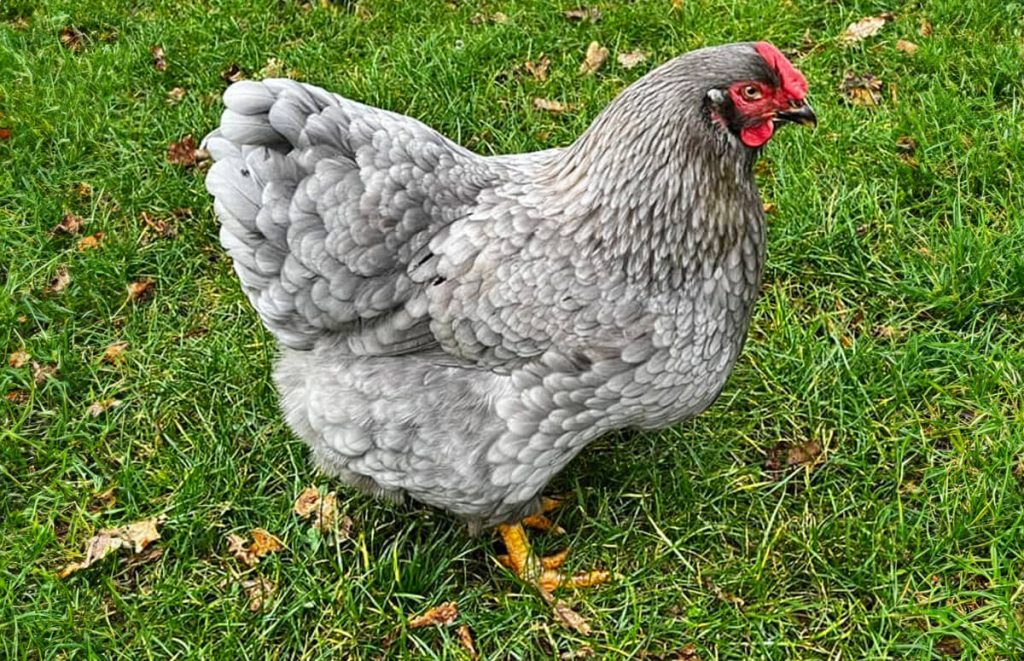
Wyandotte chickens have their signature rose comb, low and round on the head and adorned with small, red earlobes. Their legs are yellow, their eyes are orange-red, and their beak is golden-colored.
Eggs
A Blue Wyandotte is a dual-purpose breed and a decent egg layer. The hens lay about four large cream to brown eggs per week, or more than 200 eggs yearly.
The eggs of the Wyandotte tend to vary little in color, but – according to breeders – within the same Blue variety, the chickens usually lay the same shade of brown.
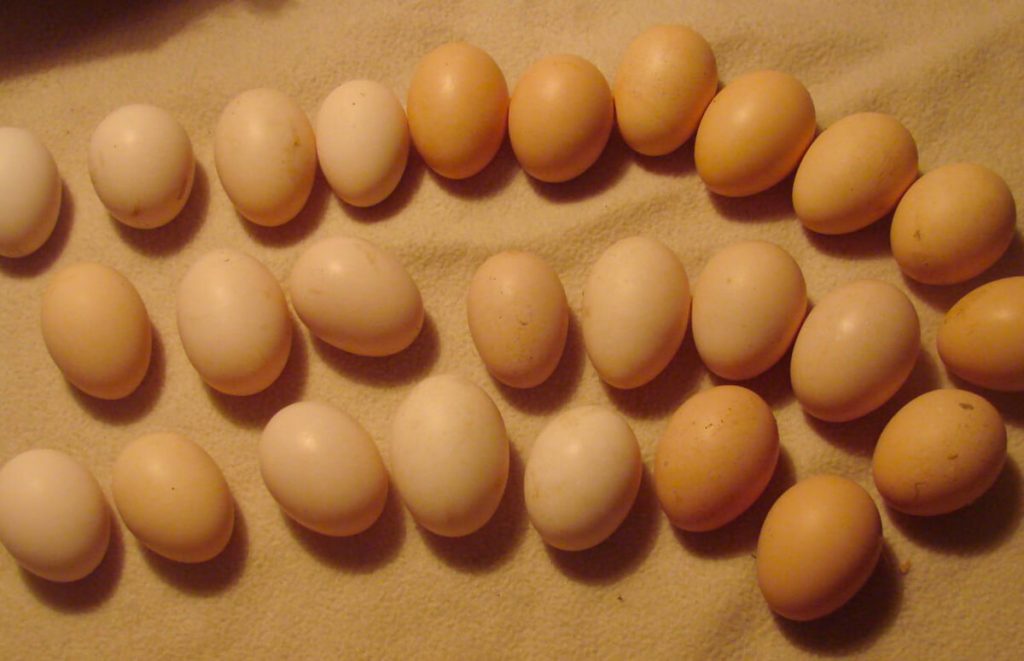
In the winter, they usually slow down or stop laying, but if you add extra light, these cold-hardy birds tend to keep laying eggs. The only time Blue Wyandottes stop laying eggs is during molting.
Oftentimes, Blue Wyandotte hens tend to go broody, which can also cause them to stop egg production.
Blue Wyandotte Hen vs Rooster
Blue Wyandotte hens and roosters share some similarities, especially when it comes to the colors of their plumage. Distinguishing them can be difficult for the untrained eye.
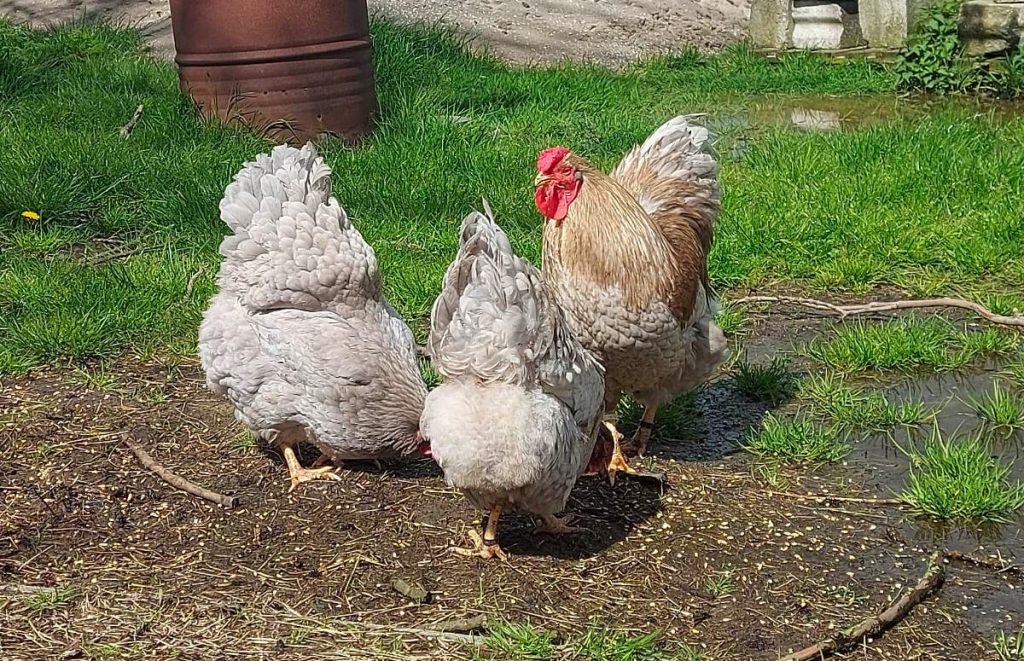
The primary difference between them lies in their feathering. Here’s a closer look at the differences between Blue Wyandotte hens and roosters:
| Feature | Blue Rooster | Blue Hen |
|---|---|---|
| Weight | 8 lbs | 6.5 lbs |
| Back | Pointed saddle feathers | Rounded feathers |
| Plumage | Blueish grey | Blueish grey |
| Tail Feathers | Long sickles, pointed | Shorter, rounded on the edges |
| Comb, Wattles | Big, red | Small, pink |
| Body | Large and broad with long legs | Smaller, shorter legs |
Roosters have long, curved, and prominent sickle tail feathers, known as sickles. These sickle feathers are absent in hens. Next to this feathering, roosters are, on average, bigger than hens.
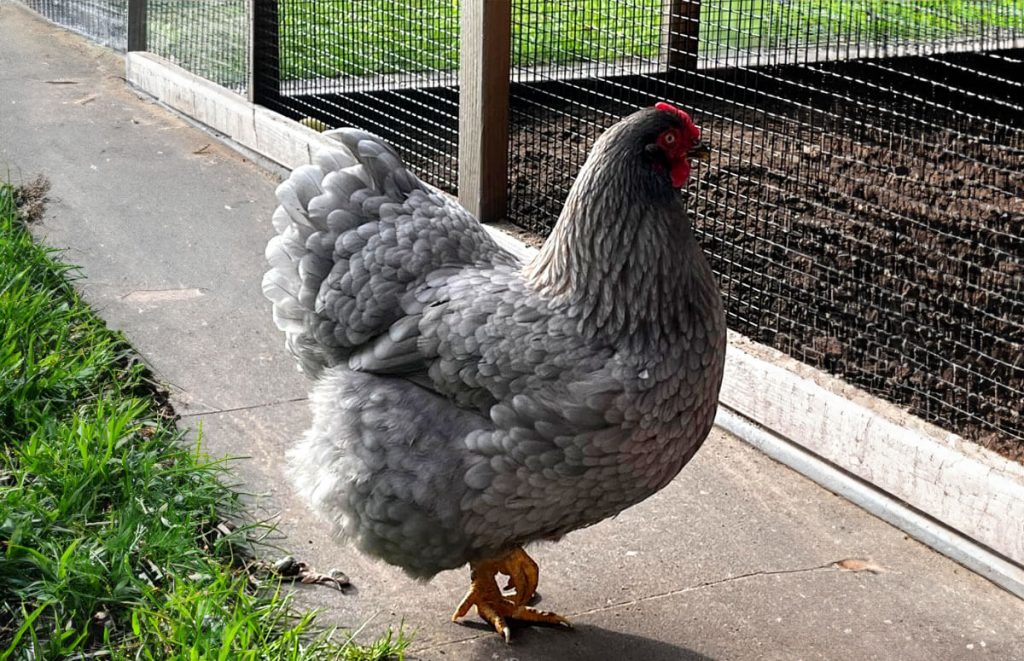
Climate
Blue Wyandottes are great for different climates. They can handle cold weather well because they were bred to withstand harsh American winters. Their low, broad rose combs are less likely to get frostbite, and their thick feathers keep them warm in winter.
But when it gets hot, Wyandottes will struggle more. During a heatwave, make sure to keep them cool. Otherwise, they can quickly get too hot and suffer from heat stress.
When living in a hot or tropical environment, Wyandottes are not the best choice. In that case, watch for Mediterranean breeds like the Ancona or Sicilian Buttercup.
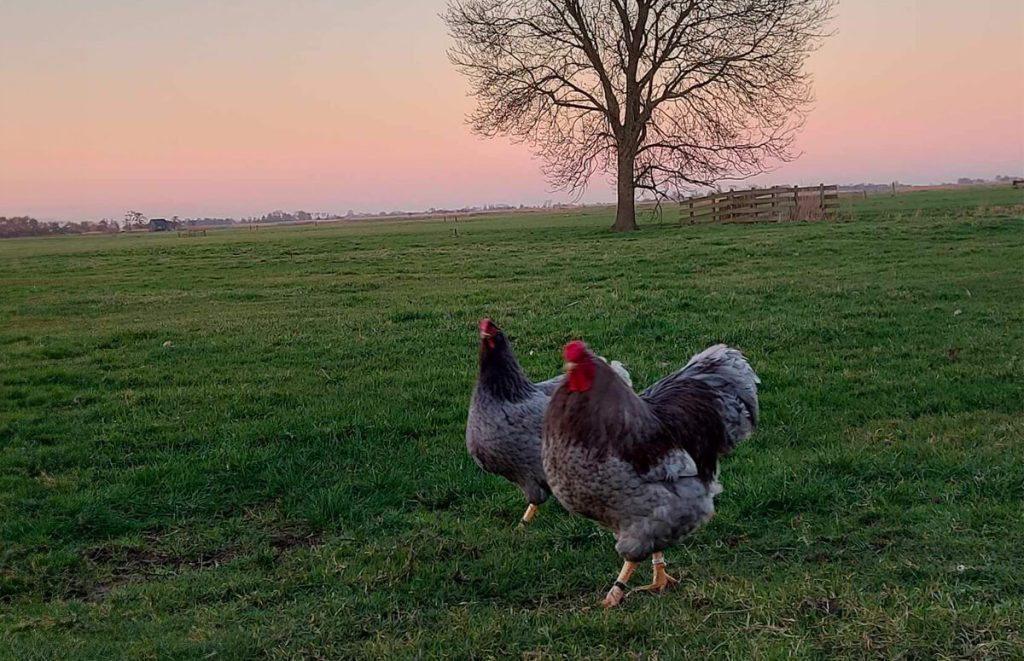
Blue Wyandotte Variety
The world of Wyandotte colors and varieties is a complex maze to navigate. While The Standard of the American Poultry Association recognizes nine official varieties of the large fowl Wyandotte chicken, the Europeans list thirty colors.
Wyandotte chickens generally come in three classes:
- Laced Wyandottes: silver laced, golden laced, blue laced, …
- Marked Wyandottes: black-white Columbia, Partridge, Silver Penciled, …
- Single-colored Wyandottes: white, blue, black, buff, …
The most popular Wyandotte varieties are the marked and laced ones. Their beauty lies in the exceptional patterns covering their entire bodies. Single-colored Wyandottes, like the Blue Wyandotte, are generally less attractive to breeders and chicken enthusiasts.
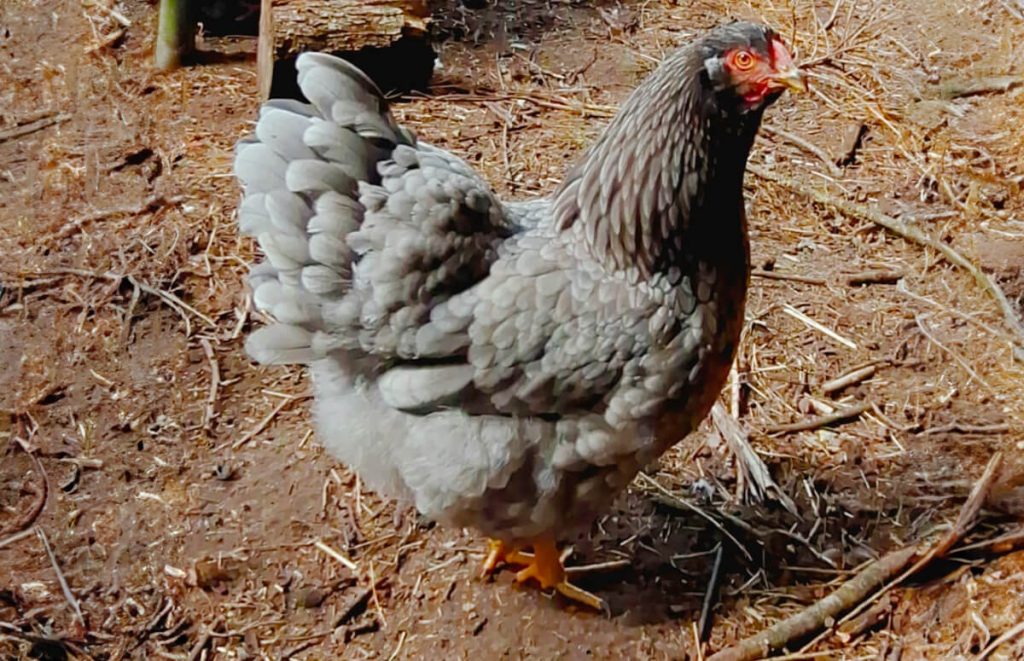
The blue color is also challenging to breed, as many birds of the offspring will be splash-colored. However, the Blue birds are also the origin of many blue-laced and marked Wyandottes, such as the Blue Columbian Wyandotte, the Blue Laced Wyandottes, Blue Penciled Wyandottes, and Blue Partridge Wyandotte.
Blue Silver Penciled Wyandotte
The Blue Silver Penciled Wyandotte is a variation of the popular Silver Laced Wyandotte. However, the lacing is grey-blue instead of black, which changes the overall tone of the bird:
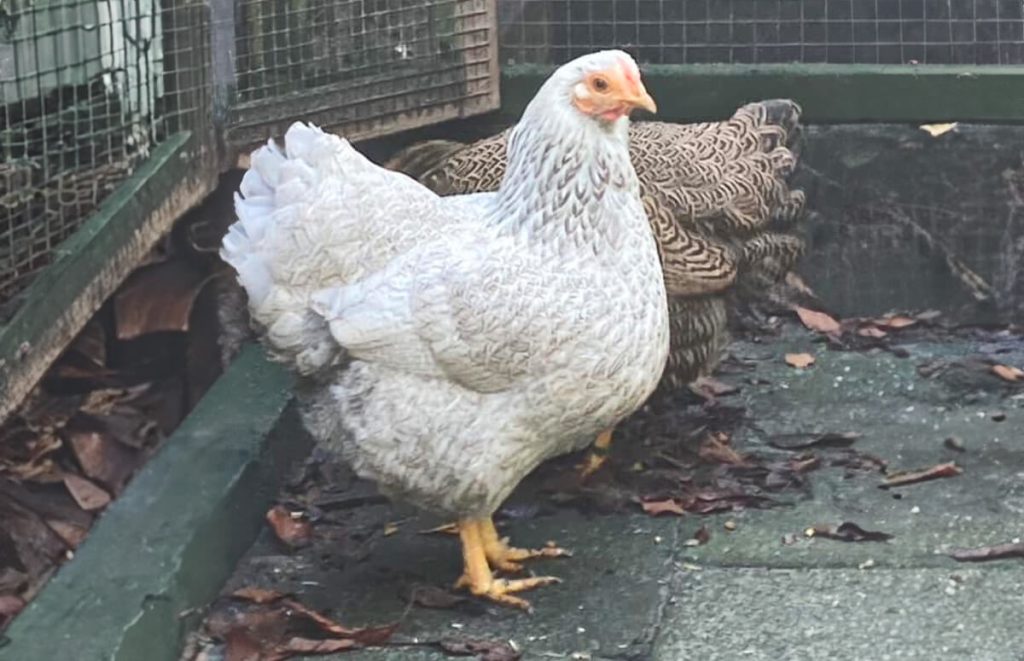
White Blue Columbian Wyandotte
The White Blue Columbian Wyandotte is a variant of the traditional Black and White Columbian Wyandotte, but its feathers have a grey shine instead of the usual black pigments.
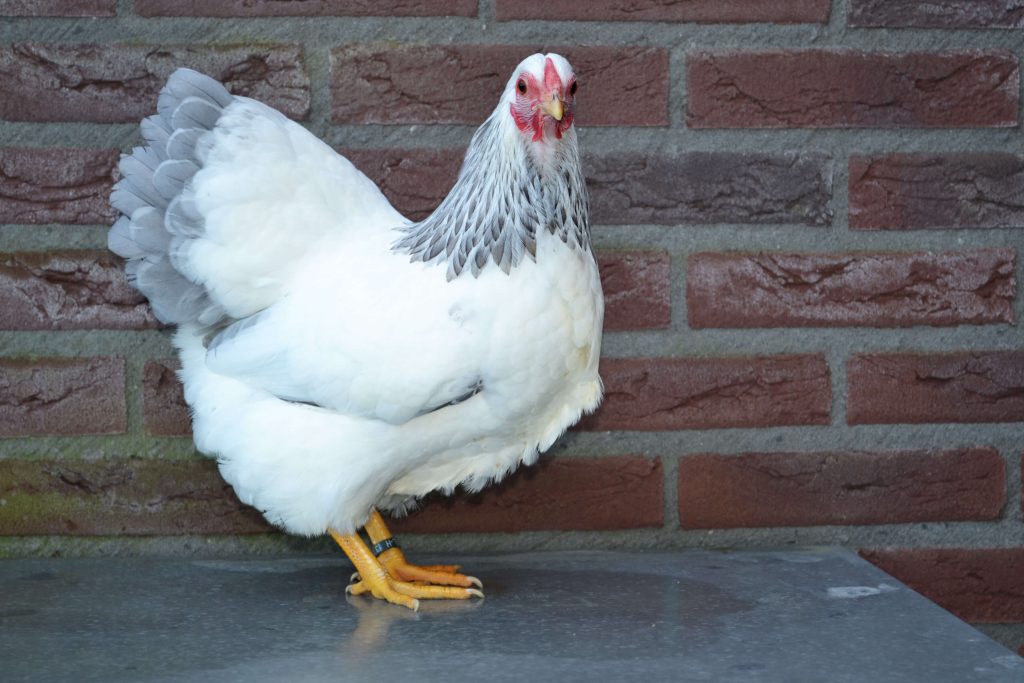
Blue Partridge Wyandotte
The blue partridge Wyandotte is a stunning partridge bird where the blacks are replaced with blue. This color shift can result in a gorgeous plumage when the blue is appropriately distributed. In the picture below, you can see how the body and tail feathers of this Blue Partridge rooster are shiny blue with golden rims.
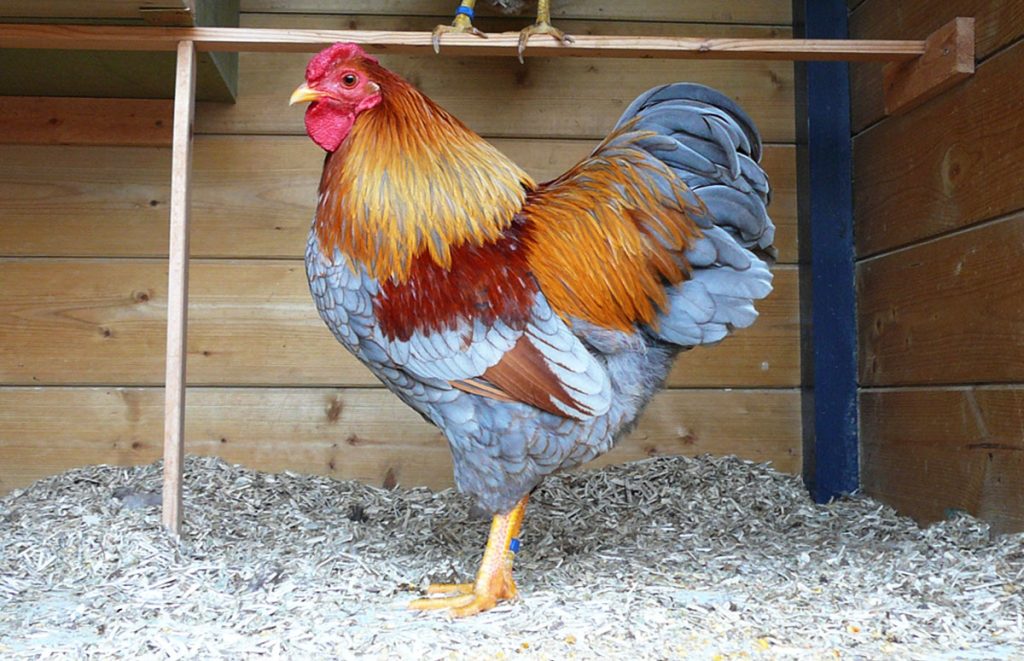
Blue Wyandotte Genetics
The looks of the Blue Wyandotte are the result of chicken genetics:
- they have Blue genes
- they lack Pattern genes
Blue Color
The greyish color of the feathers comes from the Blue gene, which dilutes the black pigments in the feather. Chickens with a single copy of the Blue gene (Bl bl+) look greyish. Birds with two copies (Bl Bl) look Splash or almost white.
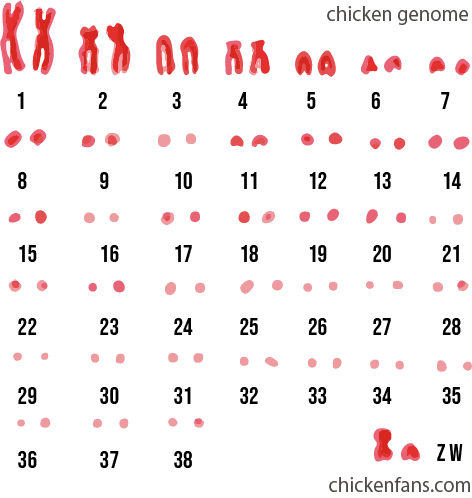
The Blue Wyandotte has only one copy of the Blue gene. It’s located on microchromosome 12, so it’s not a sex-linked gene.
Lack of lacing and patterns
To get a uniform color, the Blue Wyandotte can not have any copy of the pattern gene (Pg). While dominant white dominant white (E) suppresses the patterns of Pg in some White Wyandottes, they do show up in Blue Wyandottes. As a result, Blue Wyandottes never carry the pattern gene (pg+, pg+).
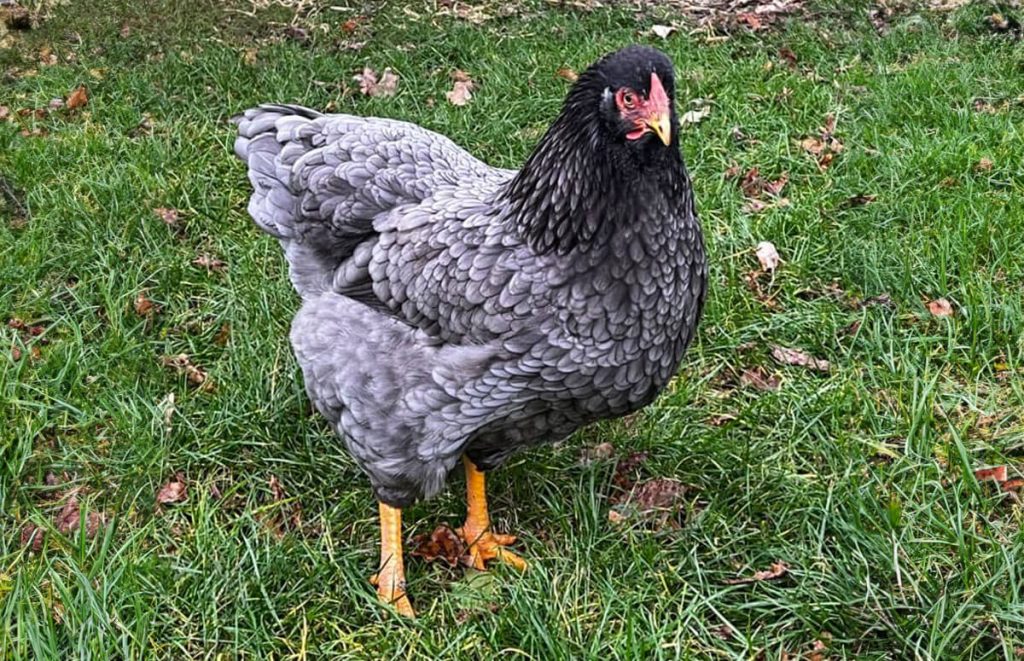
If you mix Melanotic (Ml) in Blue Wyandottes, they become Black Laced Blue Wyandottes. To get the Columbian Blue variants, have a Columbian gene (Co) that dilutes the black pigments – but even then, it still depends on the types of blacks on the E-allele what you get.
Blue vs Lavender
Blue and Lavender in Wyandotte plumage refer to distinct genetic dilutions of black pigments. Blue Wyandotte feathers can show dark feather edges, while lavender (Lav), often termed “self-blue,” shows as even plumage without lacing. Lavender chickens may also have a weaker feather structure, so they need selective breeding for improvement.
History of the Blue Wyandotte
The Blue Wyandotte’s history is rooted in the development of the Wyandotte breed, which originated in the United States during the late 19th century. This breed’s creation remains a mystery, but it is believed it was created by crossing Dark Brahmas, Spangled Hamburgs, and others. The goal was to develop a dual-purpose breed known for its utility, hardiness, and striking looks.
Over time, various color varieties of Wyandottes were developed, including the Silver Laced, Golden Laced, White, and Partridge, among others. Each variety shows unique colors and patterns. In the picture below, you can see published work of The Reliable Poultry Journal regarding early Wyandotte varieties.
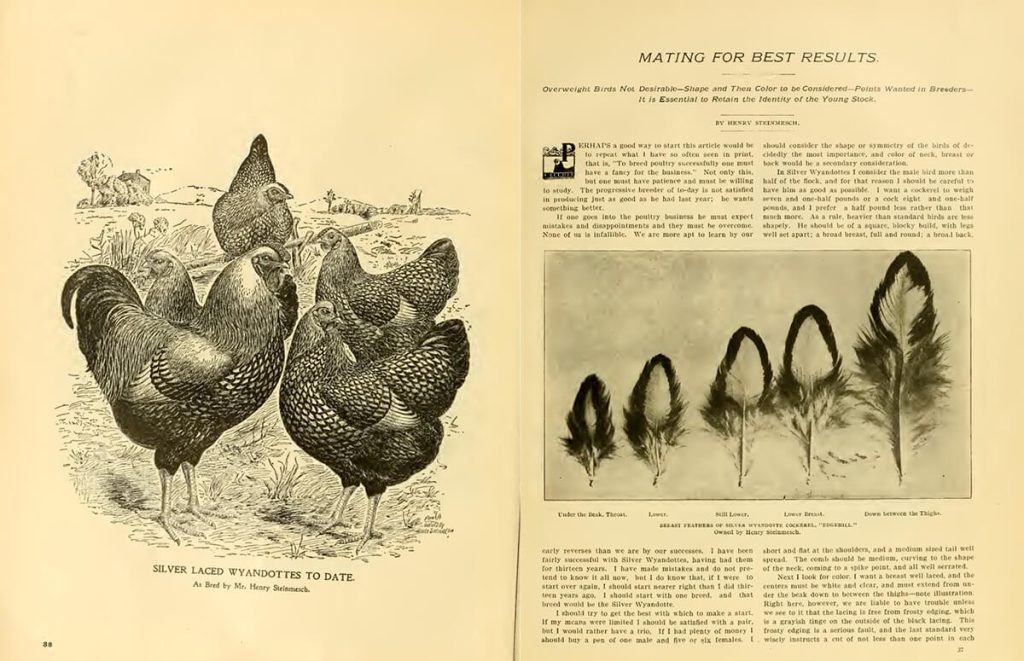
The Blue Wyandotte is a result of crossing the Black Wyandotte with the Blue Andalusian. The Blue Andalusian, with its bluish slate-colored plumage and distinct black lacing on each feather, was responsible for the blue color of the Wyandotte breed.
The Blue Wyandotte was admitted to the American Poultry Association (APA) Standard of Perfection in 1977, securing its place as a recognized and celebrated variety. Today, Blue Wyandottes are cherished for their unique appearance and contribute to the poultry world as both ornamental birds and as providers of meat and eggs.
Personality
Blue Wyandottes, like other members of the Wyandotte breed, are known for their friendly and pleasant personalities. Many chicken keepers favor them for their lovely temperament and adaptability.
They are often described as docile and approachable, making them a good choice for families and beginning chicken keepers.
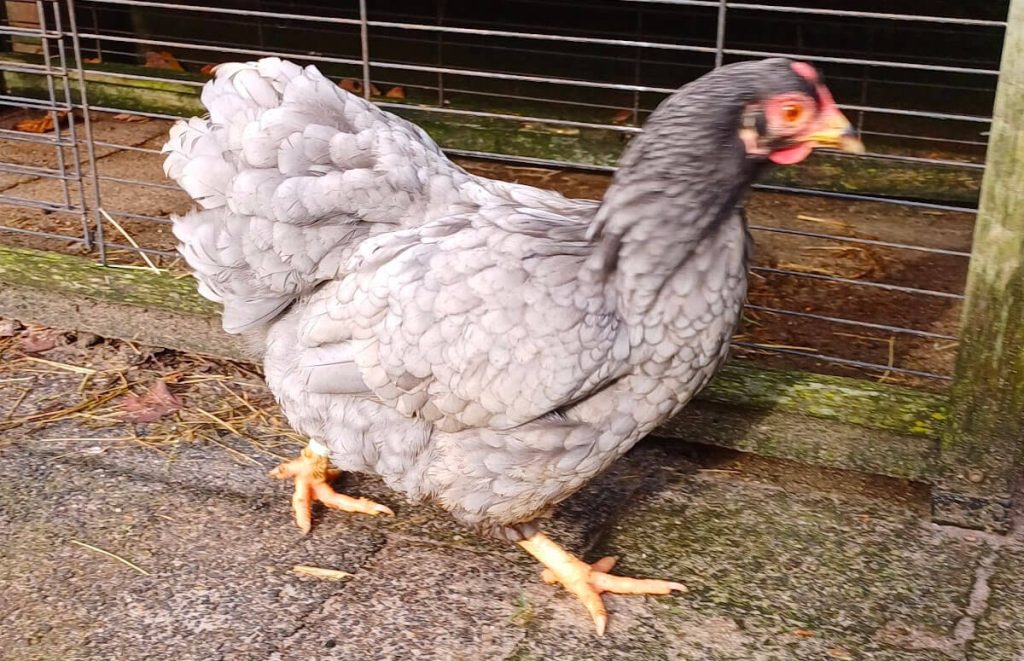
Though they can be dominant, Wyandottes tend to be relatively calm and non-aggressive when interacting with other flock members. They can establish a pecking order but do so without excessive aggression.
Due to their assertive nature and slightly heavier build, Wyandottes are mostly positioned high in the pecking order.
Related Articles
Here are some of the articles we mentioned:
- Wyandotte Chickens: an overview of the Wyandotte chicken breed and the color varieties
- Silver Laced Wyandotte: a breed profile of the Silver Wyandotte variety
- Silver Penciled Wyandotte: a full overview of the Silver Penciled Wyandotte variety
- Golden Laced Wyandotte: a breed profile of the Golden Laced Wyandotte variety
- Buff Wyandotte: a complete guide of the Buff Wyandotte chicken and buff varieties
- Blue Laced Red Wyandotte: a comprehensive guide on this interesting variety
- White Wyandotte: a breed profile of the White Wyandotte
- Brahma Chickens: large chicken breed originally used to create the Wyandotte
- Hamburg Chickens: chicken breed used to create the Wyandotte
- Chicken Feather Guide: to understand the difference between all types of feathers
- Chicken Breeding & Genetics: an overview for chicken breeding and genetics for beginners
If you are considering to get Silver Laced Wyandottes, here are some other resources:
- Chicken Coop Size Calculator: to calculate the size of your coop
- Chicken Raising Guide: general chicken raising guide






















